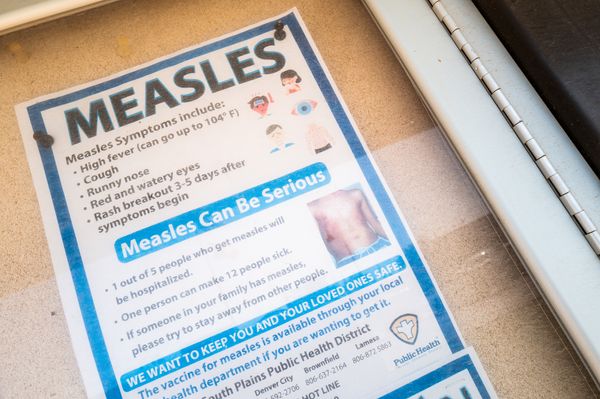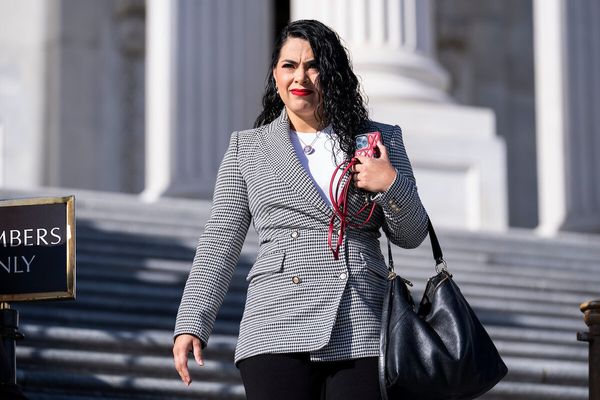
We know Vermonters love their Subarus. 11.3% of new cars sold in the state are a Subaru—vastly more than the company’s nationwide share of sales, which hovers around 1%. But the state’s ties to Subaru run deeper than Foresters parked in quaint little driveways. In the forested hills outside Burlington, there’s a warehouse where Subaru’s rally racing pedigree has been kept alive for two straight decades.
This is the story of Vermont SportsCar, builders of the fastest Subarus on the planet.
A Brief History Of Subaru, Advertising, and Vermont
Subaru’s first days in America were rocky, and the company had no clearly-defined image. The company’s American import arm (known as Subaru of America, or SOA) was founded by automotive madman Malcolm Bricklin.
Bricklin (who is most notorious for the flopped “supercar” bearing his name, the gullwing-doored Bricklin SV-1) started a variety of automotive ventures, but Subaru of America was perhaps his most successful. He began by importing Subaru 360 kei cars to America in the late 60s. He advertised the 360 with the tagline “Cheap and Ugly Does It”. Sales were initially strong until Consumer Reports branded the vehicle “Not Acceptable” thanks to its complete lack of crash safety and anemic powertrain that simply could not maintain highway speeds.
Sales plummeted and Bricklin exited the company, leaving it with a cheap, ugly, and unacceptable image. SOA staggered onward under the leadership of cofounder Harvey Lamm. Under Lamm, it abandoned kei car imports and focused on bigger cars (like the Subaru Leone) that had larger engines to keep up with American freeway traffic. Subaru’s main selling point remained its low price.
As the company attempted moving upmarket in the 70s and 80s, it concentrated its meager advertising dollars on its all-wheel-drive models, which were at the time a rarity on American roads. One of the company’s first nationally-focused advertising campaigns, for example, was sponsoring the U.S. Ski Team in 1976. By the 1984 Winter Olympics, it was running national ads to showcase how capable its all-wheel-drive system was.
The ads were a success. The company doubled down with a local focus on cheaper ad markets in cold states. In these regions—such as rural New England and the Pacific Northwest—the company built a reputation for its trustworthy, humble machines that could handily tackle inclement weather. Subaru’s popularity surged in snowy areas and with the outdoorsy people who lived there. The idea of a sporty Subaru was still decades away, but Vermonters were hooked on these dependable all-wheel-drive cars.

“I Wanna Chase This Rally Thing”
While Subaru sponsored the U.S. Ski Team and recovered from the stain of “Cheap and Ugly”, rural Vermont native Lance Smith, then in his early 20s, was employed restoring high-dollar classic cars.
“[I] did sports cars… a lot of Jag V-12 work, things like that,” Smith explained, reflecting on his early career. “I spent years making cars perfect.”
But the stoic, white-glove nature of concours restoration bored him.
“I grew up on these gravel roads [in Vermont] and sliding around in the snow… I just loved it. I really wanted to be a rally driver.”
Thanks to his boss’s connections with John Buffam, a New England native and the most-successful American-born rally driver of all time, Smith occasionally met his heroes and wrenched on honest-to-god race-prepped rally cars.
First contact with the machines only deepened his interest. He found the hard-driven rally cars endearing and the sport enticing. His lightbulb moment was as dramatic as the Group B era itself, he explained.
“In 1985, John Buffam got the first Audi Quattro in from Germany, an ex-Michelle Mouton car… We got to set the suspension up. When it came in he called us over and we spent a day with the car. As part of that, I rode in that car, and I was just blown away… How could that light up all four wheels on dry pavement? I was just shocked…. Jeez, okay, I’ve gotta do this. I wanna chase this rally thing.”
After becoming part-owner of a shop, Smith bought a Mk2 Golf—eight valve—with a cage.
“It was a prototype that Volkswagen was fooling around with,” he said. “That was my first rally car.”
Despite his best efforts behind the wheel, Smith realized he’d probably never make it as a professional driver. He switched up to co-driving, a skill he had a knack for. It worked well with his day job, too, as he’d often co-drive for shop clients who had him work on their personal or rented rally cars.
It was then that his calling as a rally mechanic became clear. On one occasion, he read pace notes from the right seat of a rented Audi.
“We were going down a stage road… at night. The lights went off. The owner was just freaked. Of course, he should be! So I convinced him… let me build the rally car. Just trust me.”
Smith built his first from-scratch race machine out of a 1988 Toyota Celica, with the same attention to detail that he paid to the concours cars. That same year, he also became the majority owner of the shop and company that he turned into Vermont SportsCar (VSC).
VSC continued to split its time between the lucrative concours restorations and the passion project building rally cars—and Smith continued to dive deeper into the American rally scene.

Subaru Tecnica International
As Lance Smith began his career restoring cars in a warehouse outside of Burlington, Subaru of Japan began to demonstrate their cars in the highest echelons of motorsport. The company had dabbled in regional rallies—a natural fit for its compact, lightweight all-wheel-drive cars—through the 70s, but in 1980, the team campaigned a modified Leone on the international stage in a FIA World Rally Championship event. The team forayed into motorsport throughout the decade, with entries in WRC rallies here and there, culminating in the establishment of Subaru Technica International (STI) in 1988. In 1990, Subaru entered a partnership with the British rally car constructor Prodrive.
From 1990 to 1992, the Subaru World Rally team competed with a Prodrive-prepared Legacy RS. The cars—piloted by rally legends like Markku Alen, Ari Vatanen, and Colin McRae—scored a handful of podiums, but Subaru refrained from competing in the full WRC season, preferring to run the large Legacys on higher-speed gravel rally courses.
Midway through the 1993 season, Subaru debuted Prodrive’s Impreza STI—a nimbler, more compact platform developed especially to win rallies. The team picked up steam and standings quickly, placing third in the Manufacturers’ Championship.



In 1994, Subaru placed second overall; In 1995, the team outright won the Manufacturers’ trophy with Colin McRae and Carlos Sainz piloting a pair of blue-and-yellow Imprezas. The team went on to win manufacturer championships for the next two years, an impressive feat for any manufacturer in any era of rally. The Impreza had firmly established itself as one of rally’s all-time greats.
Subaru, emboldened by its motorsports success and newfound enthusiast fanbase, debuted a new trim of the Impreza bearing the “World Rally eXperimental” (WRX) name in 1992. Its top trim, introduced for Japanese market cars in 1994, bore the “STI” moniker.
Americans—who, until this point, had thought of Subaru as boring cars for practical Burlington lesbians—increasingly began to follow the exploits of the global Subaru rally team. The boxer-engined all-wheel-drive cars were more than practical—they could be exciting. American gearheads lusted for the Japan-only WRX and STI Imprezas.



Interest was strong enough that Subaru decided to bring the next generation of WRX to the States. That generation, known colloquially as the “Bugeye”, debuted in 2002. In preparation for the new rally-inspired model landing on American shores, Subaru sought to demonstrate its racing heritage to Americans directly. The team shipped a handful of Prodrive-built Imprezas to the US to run in the SCCA ProRally championship, which ran a variety of stages throughout the lower 48 States. The team needed an American partner to help cart around, prep, and service their Prodrive cars. They sought the best rally builders in the states.
Lance was ready.
WRC Cars In America (Oh So Briefly)
While Subaru campaigned internationally, Vermont SportsCar began to get fewer and fewer concours restorations, backfilling demand with rally builds. In 1992, VSC built a turn-key Lancer Evolution clone, which immediately won a Subaru-sponsored Pride and Professionalism award for the best-built rally car to show up to an event. By the dawn of the new millennium, VSC was prepping Group N-legal GC8 STI and Lancer Evo replicas that were winning stages across North America.
By 2000, as Subaru prepared its rally team for America, Lance and Subaru reached an agreement after years of continual on-and-off talks. Subaru chose to bring over Prodrive WRC cars to campaign, but tapped VSC as the support team.
“We provided half the technicians, which was our full workforce, and our trucks and trailers… It helped me out a lot. We learned a lot from Prodrive… We got to see how [running a works team] was done on a professional level.”

The Prodrive/VSC/Subaru partnership lasted a few seasons until tragedy struck in 2003. At the Oregon Trail Rally, Subaru works driver Mark Lovell and co-driver Roger Freeman were killed in a crash on the first corner of the first stage. In the wake of the tragedy, all three factory teams (Hyundai, Mitsubishi, and Subaru) withdrew from SCCA ProRally at the end of the season. In 2004, VSC campaigned a Subaru entry without factory backing. Smith struggled to pay for it, but worked out a deal with Subaru to help make it more affordable.
“We did a parts support program. They were paying for the truck to get around… to deliver parts all over the US. The deal I made was, well, since the truck is going [anyway], can I put a trailer on the back at no charge? They said sure. We put a trailer on the truck and put [the rally car] in there.”
The rally car was Travis Pastrana’s, a pairing that would revitalize the entire sport in America.

The Superstar Effect
In 2004, Travis Pastrana was 21 years old, the fastest guy on two wheels. But he wasn’t yet a rally star. VSC had picked him up to be the company’s works driver after Subaru left, and Pastrana’s involvement arguably saved rally in America—and definitely saved VSC.
Next up, in Part Two of our story: Two decades of Subaru rally in America, told via Chris Yandell, the man who put VSC on the map, and Travis Pastrana, the man who’s spearheaded excitement for rally—and Subaru racing—in America for the past twenty years.








